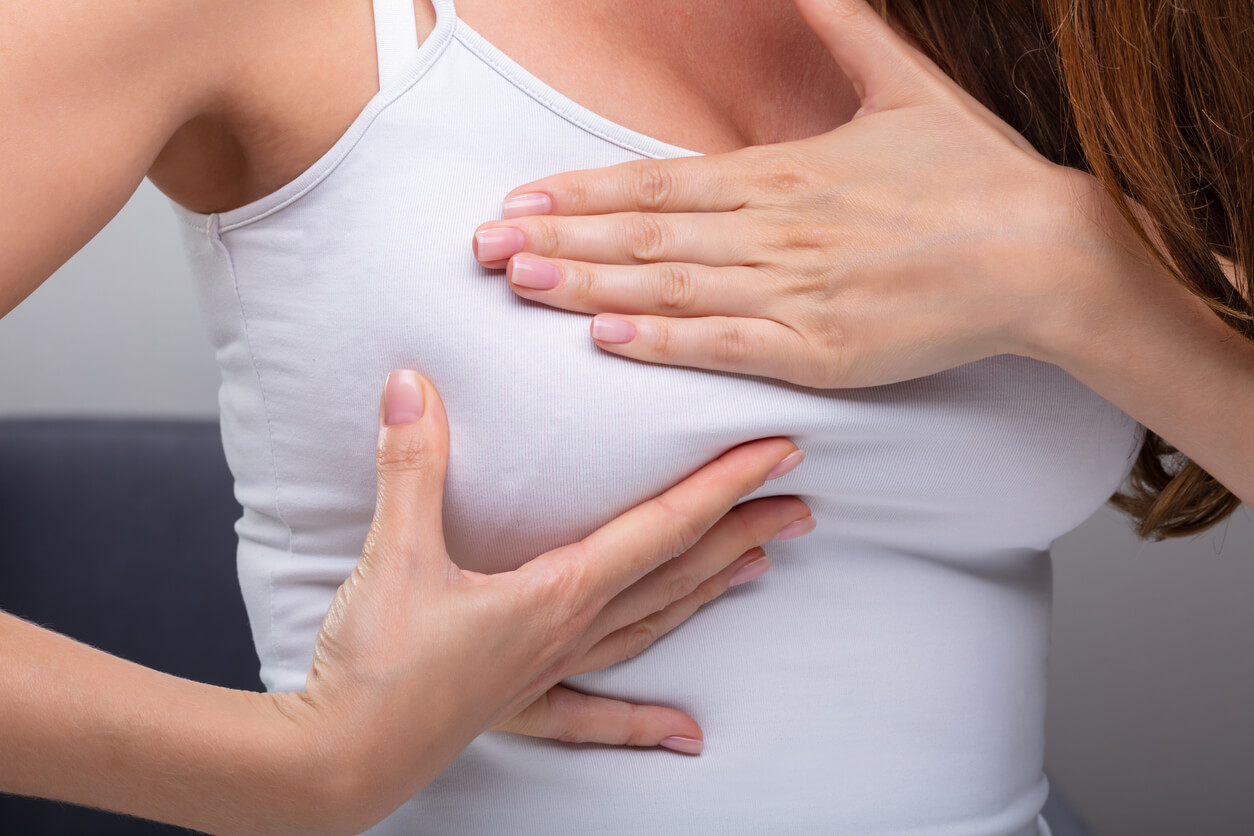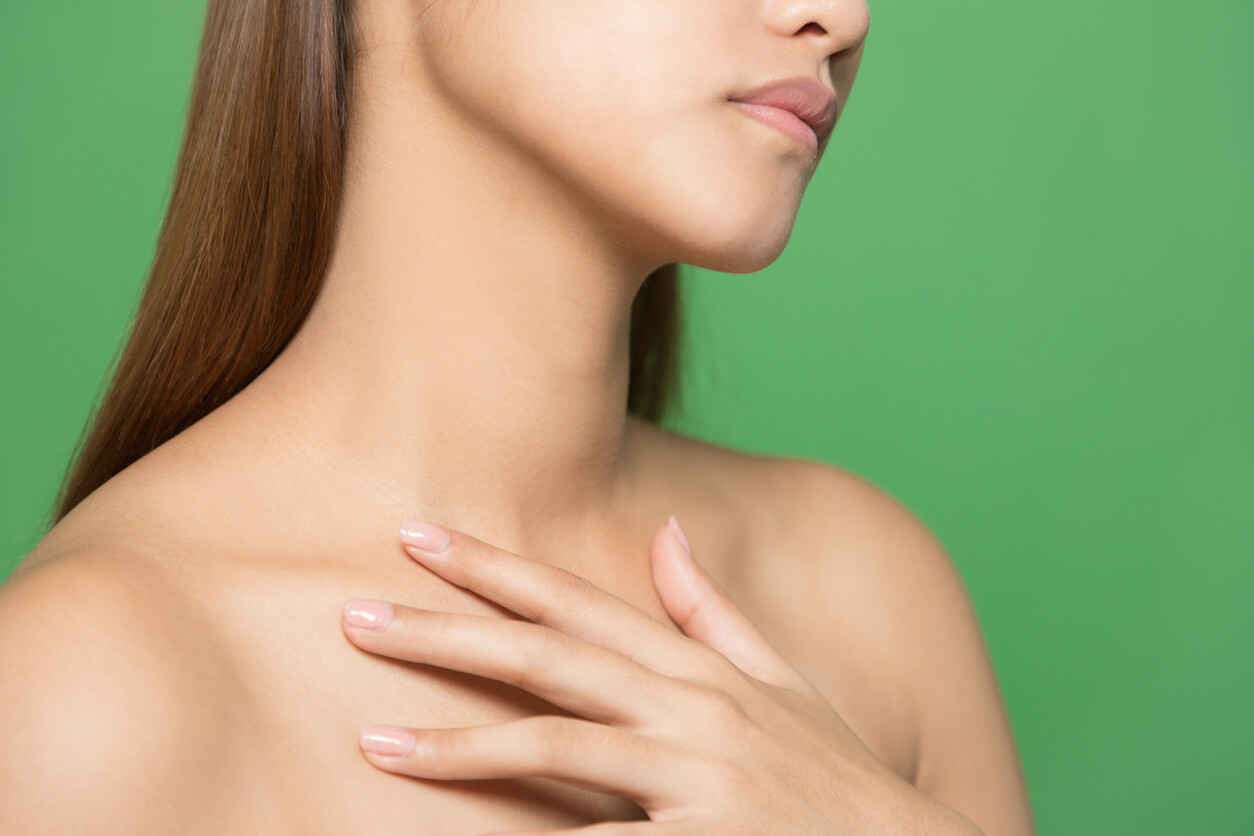How to Take Care of Your Breasts After Childbirth?


Written and verified by the dermatologist Maria del Carmen Hernandez
Your breasts after childbirth may experience certain changes that will require you to practice measures in order to avoid complications or injury to the skin. In general, they feel heavy and sensitive, therefore, with the help of these tips, you can avoid irritation and pain.
Tips to take care of your breasts after childbirth
Your breast after childbirth change both in shape and size, as they prepare for breastfeeding, enlarging the breast tissue and milk-producing glands.
Choosing the right bra
Using the right bra size is the most important thing. That is, if the bra’s too tight, it can cause irritation or blockage of one of the breast ducts. Ideally, it should be 100% cotton and comfortable, with wide straps that don’t dig into the shoulders or back. An ill-fitting bra, especially when doing sports, can cause injuries and pain.
Perform soft massages to take care of the breast after childbirth
Through circular and soft massages, the aim is to stimulate blood circulation and the consequent renewal of the most superficial layer of the skin. These movements help to keep your skin firm and toned, including your upper chest. Yoga and swimming are also activities that contribute to working on the area, thus favoring lymphatic drainage and toning the pectoral muscles.
Read also: 4 Keys to Prepare for Breastfeeding During Pregnancy

Control body weight
While the mammary ligaments and glands don’t benefit from physical exercise, the pectoral muscles, which lie beneath them, do. Therefore, toning helps to keep the breasts less saggy.
Push-ups, weighted reps, and chest presses are ideal exercises to add to your routine. In addition, weight control with a varied, complete diet rich in vegetables and whole grains is also essential. In this regard, it’s best to replace saturated animal fats that have a high cholesterol content with vitamin B, olive oil, and vitamin E, which help prevent wrinkles and improve the elasticity and tone of the skin.
Prevent breast swelling
The use of ice packs or cold compresses helps to reduce the pain or discomfort of the breasts. In addition, breastfeeding often enough prevents milk from clogging the milk ducts. What’s more, massages also help to soothe the swelling and pain of congestive breasts. However, in cases where swelling is accompanied by fever, it’s important to consult a doctor.
Apply breast milk to the nipple
To prevent nipple soreness, the baby’s correct latching to the breast must be ensured. In other words, the infant’s mouth should be wide open and cover the entire areola. Also, keeping breast milk on the nipples helps to lubricate and protect them in order to prevent future cracks or fissures. Other products that help prevent blistering, bleeding, cracking, or tenderness include the following:
- Coconut or olive oil
- Lanolin
- Calendula-based creams
However, if nipples are found to be bleeding, a medical consultation is recommended.
You might be interested in: Preventing and Curing Sore, Cracked Nipples

Use moisturizing cream
Moisturizing the skin surface every day, especially the breast region, helps keep the skin hydrated and firm. For this purpose, lotions with a high vitamin E, allantoin, or hyaluronic acid content are recommended. In addition, gentle body exfoliation, with creams or vegetable sponges, helps to remove dead cells to stimulate blood circulation and restore the skin’s own elasticity.
Apply sunscreen daily
The damage caused by repeated and prolonged exposure to ultraviolet rays on the skin’s surface is well known. Therefore, it’s not only advisable to avoid sun exposure at extreme times of the day, but also apply protection every day of the year. It’s best to opt for a broad-spectrum sunscreen with high protection (+50) and renew it every two hours in case of exposure to the sun’s rays. There are even colored sunscreens that can also be used as makeup.
Caring for your breasts after childbirth and during pregnancy
Some physiological changes can’t be avoided, such as the change in color of the nipples, the increase in size, or the discomfort of the milk load. However, breast sagging, stretch marks, and cracked nipples can be prevented. Consequently, try to follow all the proposed tips to take care of your breasts after childbirth to avoid complications that are more difficult to manage.
Your breasts after childbirth may experience certain changes that will require you to practice measures in order to avoid complications or injury to the skin. In general, they feel heavy and sensitive, therefore, with the help of these tips, you can avoid irritation and pain.
Tips to take care of your breasts after childbirth
Your breast after childbirth change both in shape and size, as they prepare for breastfeeding, enlarging the breast tissue and milk-producing glands.
Choosing the right bra
Using the right bra size is the most important thing. That is, if the bra’s too tight, it can cause irritation or blockage of one of the breast ducts. Ideally, it should be 100% cotton and comfortable, with wide straps that don’t dig into the shoulders or back. An ill-fitting bra, especially when doing sports, can cause injuries and pain.
Perform soft massages to take care of the breast after childbirth
Through circular and soft massages, the aim is to stimulate blood circulation and the consequent renewal of the most superficial layer of the skin. These movements help to keep your skin firm and toned, including your upper chest. Yoga and swimming are also activities that contribute to working on the area, thus favoring lymphatic drainage and toning the pectoral muscles.
Read also: 4 Keys to Prepare for Breastfeeding During Pregnancy

Control body weight
While the mammary ligaments and glands don’t benefit from physical exercise, the pectoral muscles, which lie beneath them, do. Therefore, toning helps to keep the breasts less saggy.
Push-ups, weighted reps, and chest presses are ideal exercises to add to your routine. In addition, weight control with a varied, complete diet rich in vegetables and whole grains is also essential. In this regard, it’s best to replace saturated animal fats that have a high cholesterol content with vitamin B, olive oil, and vitamin E, which help prevent wrinkles and improve the elasticity and tone of the skin.
Prevent breast swelling
The use of ice packs or cold compresses helps to reduce the pain or discomfort of the breasts. In addition, breastfeeding often enough prevents milk from clogging the milk ducts. What’s more, massages also help to soothe the swelling and pain of congestive breasts. However, in cases where swelling is accompanied by fever, it’s important to consult a doctor.
Apply breast milk to the nipple
To prevent nipple soreness, the baby’s correct latching to the breast must be ensured. In other words, the infant’s mouth should be wide open and cover the entire areola. Also, keeping breast milk on the nipples helps to lubricate and protect them in order to prevent future cracks or fissures. Other products that help prevent blistering, bleeding, cracking, or tenderness include the following:
- Coconut or olive oil
- Lanolin
- Calendula-based creams
However, if nipples are found to be bleeding, a medical consultation is recommended.
You might be interested in: Preventing and Curing Sore, Cracked Nipples

Use moisturizing cream
Moisturizing the skin surface every day, especially the breast region, helps keep the skin hydrated and firm. For this purpose, lotions with a high vitamin E, allantoin, or hyaluronic acid content are recommended. In addition, gentle body exfoliation, with creams or vegetable sponges, helps to remove dead cells to stimulate blood circulation and restore the skin’s own elasticity.
Apply sunscreen daily
The damage caused by repeated and prolonged exposure to ultraviolet rays on the skin’s surface is well known. Therefore, it’s not only advisable to avoid sun exposure at extreme times of the day, but also apply protection every day of the year. It’s best to opt for a broad-spectrum sunscreen with high protection (+50) and renew it every two hours in case of exposure to the sun’s rays. There are even colored sunscreens that can also be used as makeup.
Caring for your breasts after childbirth and during pregnancy
Some physiological changes can’t be avoided, such as the change in color of the nipples, the increase in size, or the discomfort of the milk load. However, breast sagging, stretch marks, and cracked nipples can be prevented. Consequently, try to follow all the proposed tips to take care of your breasts after childbirth to avoid complications that are more difficult to manage.
All cited sources were thoroughly reviewed by our team to ensure their quality, reliability, currency, and validity. The bibliography of this article was considered reliable and of academic or scientific accuracy.
- Hodges AL, Walker DK. Skin Care for Women. Nurs Womens Health. 2017 Dec 2016 – Jan;20(6):609-613. doi: 10.1016/j.nwh.2016.10.001. PMID: 27938801. https://pubmed.ncbi.nlm.nih.gov/27938801/
- Serpone N. Sunscreens and their usefulness: have we made any progress in the last two decades? Photochem Photobiol Sci. 2021 Feb;20(2):189-244. doi: 10.1007/s43630-021-00013-1. Epub 2021 Feb 18. PMID: 33721254. https://pubmed.ncbi.nlm.nih.gov/33721254/
- Mariani Neto C, de Albuquerque RS, de Souza SC, Giesta RO, Fernandes APS, Mondin B. Comparative Study of the Use of HPA Lanolin and Breast Milk for Treating Pain Associated with Nipple Trauma. Rev Bras Ginecol Obstet. 2018 Nov;40(11):664-672. English. doi: 10.1055/s-0038-1675180. Epub 2018 Oct 29. PMID: 30372779. https://pubmed.ncbi.nlm.nih.gov/30372779/
This text is provided for informational purposes only and does not replace consultation with a professional. If in doubt, consult your specialist.








